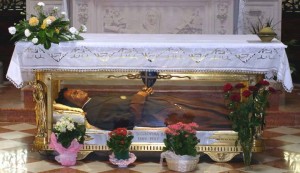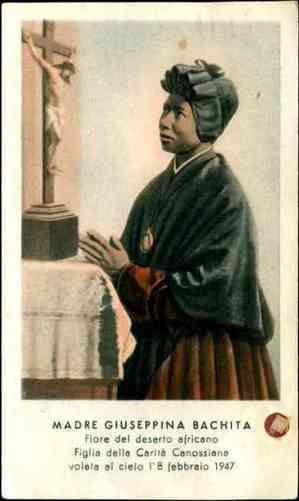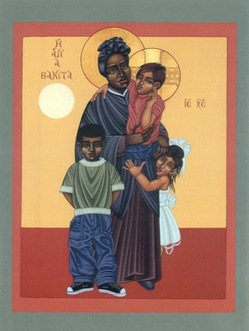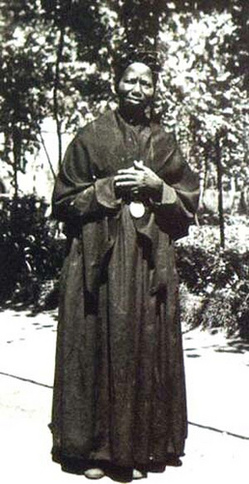
Jesus left his throne in heaven,
Humbly coming as a slave,
Here his love and his obedience
Were the ransom that still saves:
Strong the song the Church now raises
For this humble virgin’s day,
Praising God that, through all struggles,
She was led to Christ, the Way.
As a child torn from her fam’ly,
Made a slave, great suff’ring bore,
And by those who took her childhood,
Named “Bakhita” everymore.
Brought to Italy and rescued
By Cannosian sisters there,
She found Christ and then was baptized,
Lived in service and in prayer.
As the virgins in the Gospel,
Josephine was filled with light,
Daily serving at her convent,
Greetings all with heaven’s sight;
Loving all with Jesus’ mercy,
Treating each as she would him–
Persevered through pain and sorrow,
Making life her off’ring-hymn.
Glory to the loving Father
Who has made us for his own;
Glory to the Son, who saves
And who lifts us to his throne;
Glory to the Holy Spirit,
Never-ending font of love!
With our saint, the “one most blessèd,”
We raise songs to God above!
J. Michael Thompson
Copyright © 2010, WLP
8787D; BEACH SPRING
A previous post on Saint Josephine
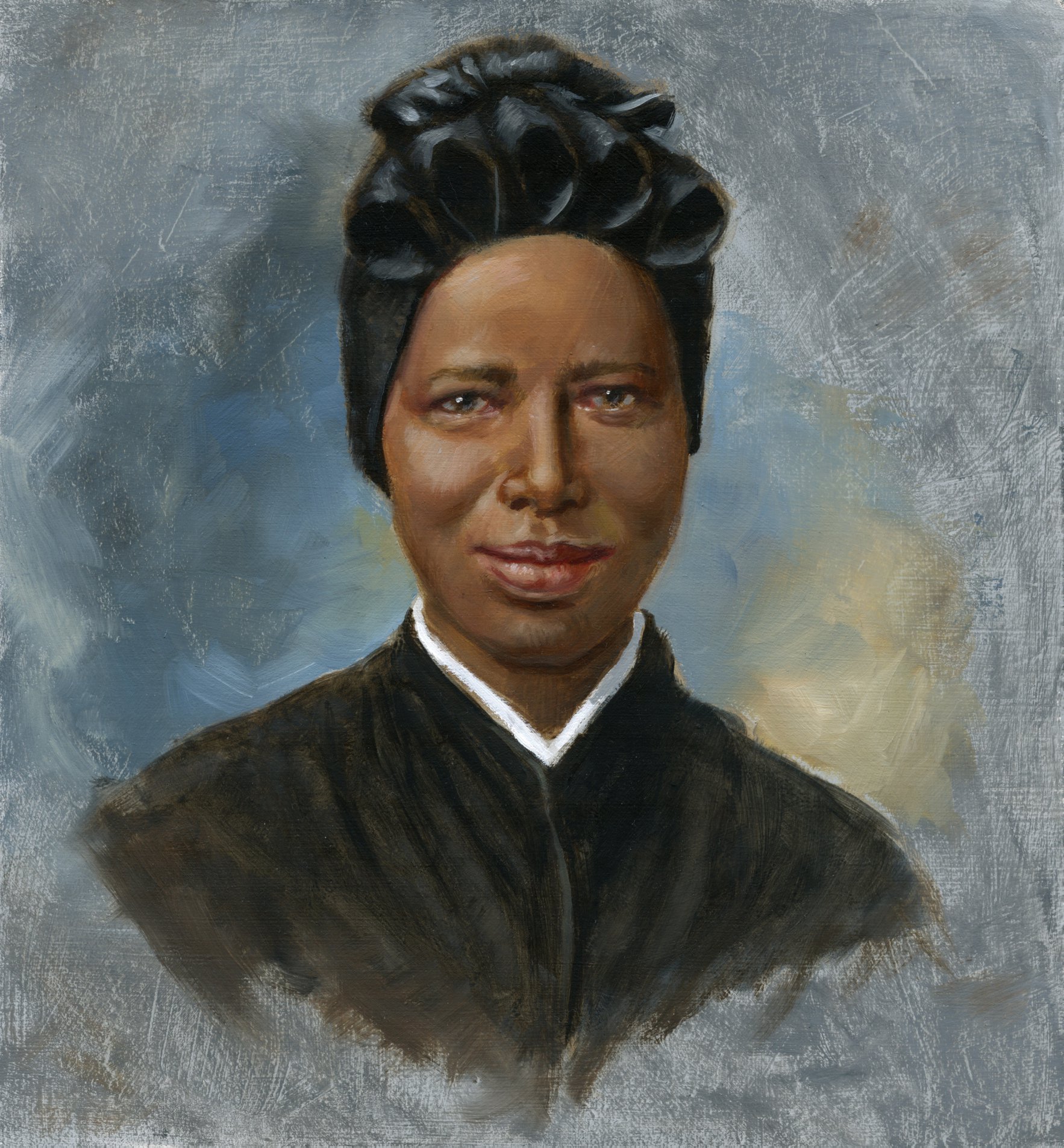 Blessed Feast Day of St. Josephine Bakhita.
Blessed Feast Day of St. Josephine Bakhita.